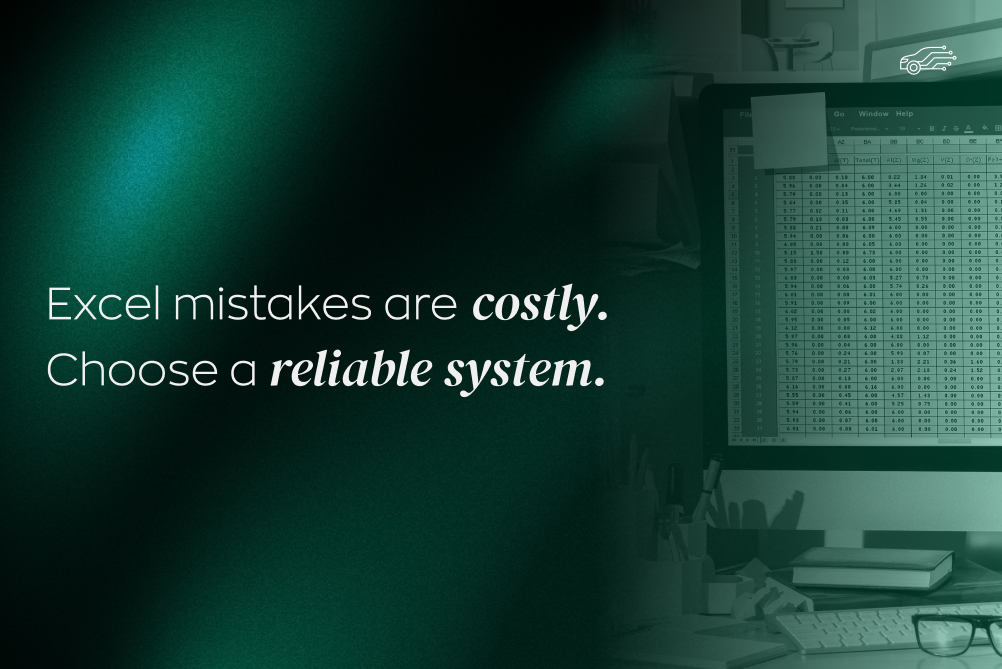Imagine this scenario: A critical machine on the production floor suddenly stops working. The production manager rushes to call the IT department, trying to explain what happened. On the other end, an overwhelmed IT specialist listens, juggling multiple tickets, struggling to understand the issue - because they’re speaking two different languages. The result? Growing frustration, costly downtime, and mutual blame. Sounds familiar?
This communication chaos is a daily challenge in many manufacturing companies. Misunderstandings between IT and production rarely stem from bad intentions - they usually come from a lack of shared language, goals, and procedures. The good news? You can fix it.
This guide will show you how to bridge the gap between IT and production, step by step, turning collaboration into a strength rather than a constant source of friction.
Why is communication between IT and production so difficult?
Before we jump into solutions, let’s understand why these barriers exist. The problems between IT and production often resemble a game of “telephone” - the message gets lost or distorted at each stage. Here’s why:
Different priorities:
For production, the key goal is continuity and maximum output “here and now.” For IT, it’s system stability, data security, and long-term optimization. A printer failure on the production floor might be a crisis for the floor manager but a low-priority task for IT compared to a critical server update.
Different languages:
Production speaks in cycles, norms, and machines. IT speaks in networks, servers, and applications. A request like “fix the computer next to machine X” could mean anything - from a software glitch to a hardware failure - making diagnosis slow and confusing.
Lack of process understanding:
IT staff often don’t fully grasp the time pressure and workflow of the production floor. On the other hand, production teams may not realize the complexity of IT processes, security requirements, or system dependencies. This mutual gap creates stereotypes: “IT never helps” vs. “Production keeps breaking things.”
Recognizing these differences is the first step to solving the problem. This isn’t a clash between two opposing teams - it’s a shared challenge that can be overcome together.
Rules and procedures - how to start organizing communication
Unstructured emails, last-minute phone calls, and hallway requests must go. Establishing clear rules and procedures is the foundation of effective collaboration. Here’s how to begin:
1. Create a single, central reporting channel
Instead of multiple ways to submit issues, establish one - a simple ticketing system (like Jira, Trello, or Asana), a dedicated email address that automatically creates tasks, or even a physical board. The key is for every request to be logged and assigned to a responsible person.
2. Define priorities and response times (SLA)
Work together to categorize issues (e.g., critical, high, normal) and agree on expected response times for each. A production control system failure must always take priority over a non-functioning mouse. Clear rules remove the feeling that some issues are being ignored.
3. Schedule regular sync meetings
Hold weekly or biweekly short meetings with representatives from both departments. They’re a perfect opportunity to discuss ongoing issues, plan updates, and clarify delays. Regular communication builds trust and helps prevent escalation.
4. Assign “liaisons” or “ambassadors”
Each department should have designated contact persons. A liaison from production can describe technical problems more precisely, while one from IT can explain complex topics in plain language. These “translators” play a vital role in bridging the gap.
Tools and technologies supporting IT - production collaboration
Procedures alone aren’t enough if the right tools are missing. Technology can serve as a shared platform where both sides work transparently and efficiently.
Ticketing and task management systems
Tools like Jira, Trello, Asana, or Redmine help centralize requests, track progress in real time, and set clear priorities. Everyone can see who’s responsible for what and how tasks are progressing.
Team communication platforms
Apps like Microsoft Teams or Slack allow for dedicated channels - for example, #production-incidents - and instant communication, including file and screenshot sharing. They reduce response time and eliminate long email threads.
MES (Manufacturing Execution Systems)
MES solutions provide real-time data about production processes. They help IT understand how systems operate and enable production to monitor efficiency, connecting both sides through shared visibility.
Knowledge bases and internal wikis
Platforms such as Confluence, Notion, or SharePoint allow you to document procedures, create shared glossaries, and publish step-by-step guides for recurring issues. Having a central source of truth saves time and reduces repetitive questions.
Investing in these solutions should never be seen as an expense. It’s an investment in stability, transparency, and smoother operations - benefits that translate directly into lower costs and higher productivity.
Building a culture of collaboration and trust
Even the best tools and rules won’t work if people lack trust and willingness to cooperate. Changing the mindset takes time and conscious effort. Here’s how to foster a collaborative culture:
Shared goals:
Instead of isolated KPIs for each department, introduce shared objectives that require collaboration - for instance, reducing machine downtime, with joint accountability for IT and production.
“Day on the floor” for IT staff:
Encourage IT employees to spend a few hours observing the production floor. Seeing the workflow firsthand helps them better understand production’s challenges and urgency.
Communication training:
Sometimes, the issue isn’t technical - it’s interpersonal. Training on active listening, asking clarifying questions, and giving constructive feedback can make a huge difference.
Celebrate shared wins:
If a major issue was solved quickly or a new tool improved production performance, celebrate it together. Recognition strengthens the feeling of “one team” rather than “us vs. them.”
Common challenges and how to solve them
Theory is one thing - practice is another. Below are common issues and practical ways to address them:
When production marks an issue as “critical,” but IT disagrees:
Refer back to your agreed SLA matrix. If the issue doesn’t meet the criteria for critical severity, the IT contact person should calmly explain why and confirm when it will be handled. Transparency is key - not dismissal.
When IT schedules a maintenance window that overlaps with production plans:
All maintenance work should be planned in advance in coordination with production scheduling. Regular sync meetings are the perfect time to align on such timelines.
When a production employee bypasses the system and calls a “friend” in IT directly:
The IT staff member should politely redirect them to the official reporting channel, explaining that this ensures proper documentation and prioritization - and prevents issues from being forgotten. It’s about teaching healthy habits across the organization.
Summary - how to make the change last
Improving communication between IT and production isn’t a one-time task - it’s an ongoing process. It’s a marathon, not a sprint. But the payoff - fewer downtimes, less stress, faster resolutions, and tangible cost savings - is absolutely worth it.
Start small. Pick one area that causes the most pain - maybe it’s introducing a ticketing tool or holding your first sync meeting. Show quick wins and demonstrate that change brings real value. Each small success builds momentum.
Remember: technology is just a tool. The real transformation starts with people - with empathy, understanding, and shared commitment to a common goal: the success of the entire organization. That’s the foundation of a company where IT and production truly play on the same team.










.jpg)
.jpg)


.jpg)
.jpg)


.jpg)
.jpg)
.jpg)
.jpg)
.jpg)
.jpg)

.jpg)
.jpg)
.jpg)
.jpg)
.jpg)
.jpg)
.jpg)
.jpg)
.jpg)
.jpg)






.jpg)
.jpg)
.jpg)

.jpg)

.jpg)


.jpg)
.jpg)

.jpg)
.jpg)

.jpg)

.jpg)
.jpg)
.jpg)

.jpg)
.webp)

.webp)


.jpg)









.webp)


.webp)

























